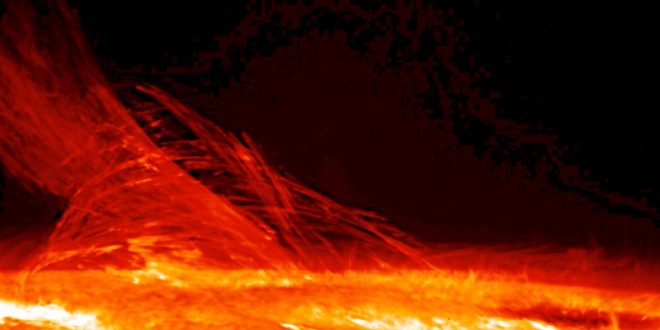Japan’s Hinode sun-observing satellite has delivered spectacular imagery and invaluable measurements of the sun since it launched into space 10 years ago on Sept. 23, 2006.
“The sun is terrifying and gorgeous, and it’s also the best physics laboratory in our solar system,” said Sabrina Savage, project scientist for Hinode at NASA’s Marshall Space Flight Center in Huntsville, Alabama. “In the past 10 years, Hinode has focused on understanding our sun as a variable star.”
Hinode has captured everything from solar explosions to the delicate motion of solar spicules, allowing scientists to study these phenomena in great detail. As most of Hinode’s instruments are still in good working order, the team behind Hinode hopes to delve even deeper into our nearest star.
“We recently adjusted mission operations to track a single target for several days, instead of jumping around among active regions,” said Savage. “This new paradigm will allow us to get a more complete picture of active region evolution.”
Agencies/Canadajournal
 Canada Journal – News of the World Articles and videos to bring you the biggest Canadian news stories from across the country every day
Canada Journal – News of the World Articles and videos to bring you the biggest Canadian news stories from across the country every day



